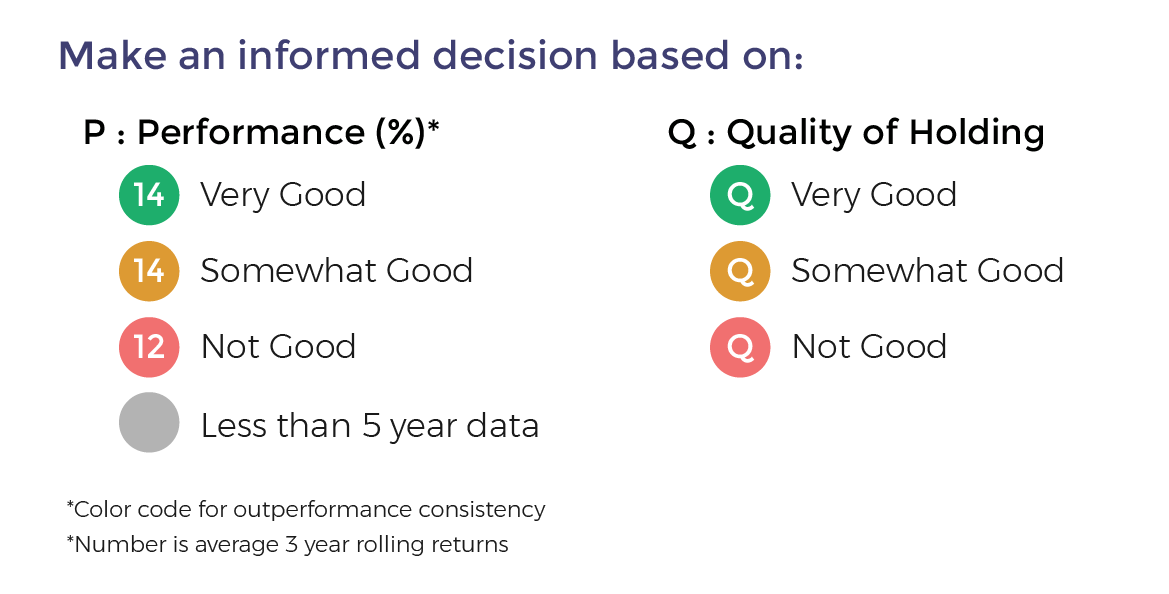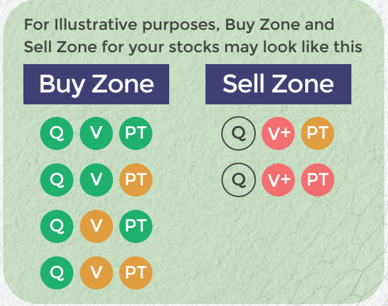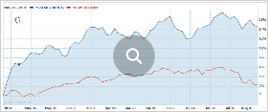Sula Vineyards
Sula Vineyards is coming out with a 100% book building; initial public offering (IPO) of 2,69,00,530 shares of Rs 2 each in a price band Rs 340-357 per equity share.
Not more than 50% of the issue will be allocated to Qualified Institutional Buyers (QIBs), including 5% to the mutual funds. Further, not less than 15% of the issue will be available for the non-institutional bidders and the remaining 35% for the retail investors.
The issue will open for subscription on December 12, 2022 and will close on December 14, 2022.
The shares will be listed on BSE as well as NSE.
The face value of the share is Rs 2 and is priced 170.00 times of its face value on the lower side and 178.50 times on the higher side.
Book running lead managers to the issue are Kotak Mahindra Capital Company, CLSA India and IIFL Securities.
Compliance Officer for the issue is Ruchi Sathe.
Profile of the company
The company is India’s largest wine producer and seller as of March 31, 2022. It has been a consistent market leader in the Indian wine industry in terms of sales volume and value (on the basis of the total revenue from operations) since Fiscal 2009 crossing 50 per cent market share by value in the domestic 100 per cent grapes wine market in Fiscal 2012. The company has consistently gained market share (on the basis of its total revenue from operations) from 33 per cent in Fiscal 2009 in 100 per cent grapes wine category to 52 per cent in value in Fiscal 2022. Furthermore, the company is the market leader across all four price segments, being ‘Elite’, ‘Premium’, ‘Economy’ and ‘Popular’, with a higher share of approximately 61 per cent by value in the ‘Elite’ and ‘Premium’ categories in Fiscal 2022, as compared to its overall market share of 52 per cent in the Indian wine industry. Furthermore, the company is also recognized as the market leader across wine variants, including red, white and sparkling wines. Sula Shiraz Cabernet is India’s largest selling wine by value in Fiscal 2021.
The company’s business can be broadly classified under two categories (i) the production of wine, the import of wines and spirits, and the distribution of wines and spirits (the “Wine Business”); and (ii) the sale of services from ownership and operation of wine tourism venues, including vineyard resorts and tasting rooms (the “Wine Tourism Business”). However, since the Wine Tourism Business is incidental and complements the overall Wine Business, the Company’s chief operating decision makers (which includes its CEO, CFO, COO and members of the board) monitor and review the operating result of the Group as a single operating segment of manufacture, purchase and sale of alcoholic wines and spirits.
The company distributes wines under a bouquet of popular brands. In addition to the flagship brand “Sula,” popular brands include “RASA,” “Dindori”, “The source,” “Satori”, “Madera” & “Dia” with its flagship brand “Sula” being the “category creator” of wine in India. Currently, the company produces 56 different labels of wine at four owned and two leased production facilities located in the Indian states of Maharashtra and Karnataka.
Proceed is being used for:
The objects of the Offer are to (i) to carry out the Offer for Sale of up to 26,900,530 Equity Shares by the Selling Shareholders; and (ii) achieve the benefits of listing the Equity Shares on the Stock Exchanges. The company will not receive any proceeds from the Offer and all such proceeds (net of any Offer related expenses to be borne by the Selling Shareholders) will go to the Selling Shareholders.
Industry overview
Alcohol consumption is divided across three major categories of alcoholic beverages with varying trends across countries. The consumption of different alcoholic beverages has matured in developed economies, but it is still going through a transition in developing countries. Spirits as a category are more popular in developing countries, whereas contribution of beer and wine is higher in developed countries. An overall comparison shows that beer is the largest category in terms of actual volume consumed. Wine consumption is almost equivalent to spirits’ consumption in actual litres of sales. As per WHO, contribution of wine in the consumption of alcoholic beverages has progressively risen from 8.6 per cent in 2005 to 11.7 per cent in 2016, and it is estimated to reach 13.5 per cent in CY 2021 as per data on recorded 100 per cent pure alcohol consumption.
Indian Wine Market is expected to grow at a CAGR of 14 per cent in terms of volume from FY 2022 to FY 2025 with domestic players dominating volumes. The Indian wine market crossed 2.5 million cases in FY 2020. However, the sluggish economy followed by the COVID-19 pandemic pulled the market down. The Indian wine market is projected to grow to 3.9 million cases by FY 2025. The Indian wine market today is dominated by domestic wines with the share of imported wines projected to come down from 19.2 per cent in FY 2020 to 18 per cent in FY 2025 in volume terms.
The Indian wine market by value reached Rs 1,900 crore in FY 2020 and then decreased to Rs 1,625 crore in FY 2021. This decline is attributed to the lockdowns and restrictions imposed due to COVID-19 on liquor shops and food services industry. The domestic 100 per cent grape wine market specially the elite and premium segment has shown higher resilience as compared to the overall wine market in India. The elite and premium segment recorded lower de-growth at 13.5 per cent by value. However, it is estimated to go above pre-pandemic levels by the end of FY 2022 and increase to INR 3,785 Crore in FY 2025 with a CAGR of 20 per cent from FY 2022, surpassing the growth rate of the overall alco-beverage industry over the same period (CAGR of 12 per cent From FY 2022 to FY 2025). The wine industry is leveraging positive factors, including premiumization of the alcobeverage industry, wider acceptance of wine as a social drink and the growing perception of wine as a healthy alternative to spirits.
Pros and strengths
Established market leader in the Indian wine industry: Since its incorporation in 2003, it has built a strong network across key markets, which gives it a competitive advantage over other wine players. The “Sula” brand is recognized as the market leader across wine variants, including red, white and sparkling wines. “Sula” is also recognized as the “category creator” for wines in India. In addition to “Sula”, the company owns the “RASA”, “The Source”, “Dindori”, “York”, “Satori”, “Mosiac”, “Madera”, “Samara” and “Dia” brand names, among others, which are strong individual brands with distinct identities. The company is among the top 10 most followed vineyards in the world, having a large following on social media of approximately 118,000 followers on Instagram, around 123,000 likes on Facebook and around 14,000 followers on Twitter as on September 30, 2022. It has leveraged its digital and social media presence as an effective tool of communication with its consumers by engaging with social media influencers. It has seen this engagement increase its brand reach to a much wider and newer audience, especially resonating with younger demographics
Largest wine producer in India: The company is the clear market leader in the Indian domestic wine industry, with its market share by value being 52 per cent in Fiscal 2022. It has been a consistent market leader in the Indian wine industry in terms of sales volume as well as value (on the basis of total revenue from operations) since Fiscal 2009 crossing 50 per cent market share by value in the domestic 100 per cent grapes wine market in Fiscal 2012. The ‘Premium’ and ‘Elite’ wine categories contributed around 61 per cent by value and 40 per cent by volume of the Indian domestic 100 per cent grape wine market in Fiscal 2020 and are projected to grow at a CAGR of 19.7 per cent by volume in the period between Fiscal 2022 to Fiscal 2025 as compared to overall category growth of around 15.8 per cent during the same period.
Largest wine distribution network and sales presence: As of September 30, 2022, the company has a presence in 25 states and six union territories in India. It also entered the overseas markets in 2003, and currently offer its wines in over 20 countries, including Spain, France, Japan, the United Kingdom and the United States. Distribution of alcoholic beverage products is highly controlled by state government with uniform regulations for all alcoholic beverage products. The universe of retail outlets for alco-beverage industry in 2021 is estimated at close to one lakh. The entry of new players in the distribution of alcoholic beverage industry in India is prohibitive due to high regulation across states and strong relations between the current players and retail outlets which may include exclusive arrangements. Its widespread sales and distribution platform enables its products to reach its consumers ensuring consistent availability. With access to more than 23,000 points of sale (including over 13,500 retail touch points and over 9,000 hotels, restaurants and caterers) as of March 31, 2022, its products have a high visibility and availability across the country.
Leader and pioneer of the wine tourism business in India: The company has been a pioneer of wine tourism in India, which has led to a strong D2C presence. With its combination of resorts, tasting rooms and restaurants, it has helped to create a unique wine culture in India. For example, it launched the first wine tasting room in India in Fiscal 2005 at its facility in Nashik, Maharashtra, and in Fiscal 2017, established another tasting room at its “Domaine Sula” facility in Karnataka, thereby establishing the concept of wine tourism in India. It offers curated experiences, such as wine tasting sessions, winery tours and gourmet dining options at its wineries, enabling it to build a stronger connect with its consumers and popularise wine tourism in the country. It conducted around 90,000, 43,000, 85,000 and 59,000 wine tasting sessions during Fiscals 2020, 2021 and 2022 and the six months ended September 30, 2022, respectively.
Risks and concerns
Maximum revenue comes from limited number of customers: Customers of its Wine Business are primarily state run corporations, wholesalers and independent distributors who purchase its products for resale to retail outlets, restaurants, hotels and private clubs across India, and in some overseas markets. A change in its relationship with any of its significant customers could harm its business and reduce sales. The company’s revenue from operations from its top five customers (which includes state run corporations, wholesalers and independent distributors) for the six months period ended September 30, 2022 and September 30, 2021, and Fiscals ended March 31, 2022, 2021 and 2020 was Rs 793.90 million, Rs 657.20 million, Rs 1,690.76 million, Rs 1,494.43 million and Rs 1,685.19 million, respectively, which represented 35.43 per cent, 41.29 per cent, 37.25 per cent, 35.76 per cent and 32.31 per cent of its revenue from operations for the same periods. The company’s growth, therefore, is dependent on its relationship with its top five customers. Any adverse developments or inability to enter into or maintain such relationships could have an adverse effect on its business, results of operations and financial condition.
Adverse climatic conditions may impact the quality of wine grapes: As of September 30, 2022, the company had long term supply arrangements (with a contract life of up to 12 years with an option for renewal) with around 500 contract farmers. The rates payable under these contracts are fixed on a per kilogram basis subject to the fulfilment of predetermined parameters. The supply of table grapes, which forms a part of its ‘Economy’ and ‘Popular’ wine segments is abundant and it procures these from grape growers directly. On the other hand, its ‘Premium’ and ‘Elite’ wines are made from wine grapes and the supply of grapes may be affected by adverse climatic conditions. The quality of grapes may also be affected by adverse climatic conditions. While its manufacturing operations enable it to maintain the quality of its products and it has not faced any significant impact on the quality of grapes procured due to climate change, it cannot assure that adverse climatic conditions will not impact the quality of its grapes procured or products manufactured in the future. This is because the establishment of new vineyards take more than two years, and any disruption caused by adverse climatic conditions could disrupt its supply of grapes, hence adversely and materially affect its business.
Geographical constrain: The farming of wine grapes which is the major raw material for its operations, is concentrated in the west and south-western states of India. The company’s wine processing units are also located in the west and southwest of India, with its flagship facility located in Nashik, Maharashtra, and its wine processing units located in Nashik and Dindori in Maharashtra, and Bengaluru and Basavakalyan in Karnataka. Any significant social, political, economic or seasonal disruption, or natural calamities or civil disruptions in the states discussed above, and the western or south western parts of India in particular, or changes in the policies of the state or local government of the region or the Government of India, could require it to incur significant capital expenditure, change its business structure or strategy, which could have an adverse effect on its business, results of operations, future cash flows and financial condition.
Wine Tourism Business is subject to seasonal and cyclical variations: The hotel and hospitality industry in India is subject to seasonal variations. Seasonality, particularly in terms of summer and winter variations, can be expected to cause quarterly fluctuations in its revenues. Further, the hospitality industry is cyclical, and demand generally follows key macroeconomic indicators. As a result of such seasonal and cyclical fluctuations, its room rates, sales and results of operations of a given period of the financial year may not be reliable indicators of the sales or results of operations of the remaining period of the financial year or of its future performance and its past financial results may not be indicators of the sales or results of operations of its future performance.
Outlook
Sula Vineyards is the India's largest wine producer and seller as of March 31, 2022. The company also distributes wines under a bouquet of popular brands including RASA, Dindori, The source, Satori, Madera & Dia with its flagship brand Sula being the category creator of wine in India. Currently, the company produces 56 different labels of wine at four owned and two leased production facilities located in the Indian states of Maharashtra and Karnataka. The company have managed to build the largest distribution network among wine companies in India, with close to 13,000 retail touchpoints across the country in 2021. On the concern side, the company’s revenue from operations is dependent upon a limited number of customers (which includes state run corporations, wholesalers and independent distributors). Any adverse developments or inability to enter into or maintain such relationships could have an adverse effect on its business, results of operations and financial condition. Furthermore, it competes for shelf space in retail stores and for marketing focus by its distributors, most of whom carry extensive product portfolios.
The issue has been offered in a price band of Rs 340-357 per equity share. The aggregate size of the offer is around Rs 914.62 crore to Rs 960.35 crore based on lower and upper price band respectively. Minimum application is to be made for 42 shares and in multiples thereon, thereafter. On performance front, total income increased by 8.35 per cent from Rs 4,215.12 million in Fiscal 2021 to Rs 4,567.00 million in Fiscal 2022, primarily due to an increase in its revenue from operations. In Fiscal 2022, it took the strategic decision to focus on sales, distribution and marketing of its Own Brands which resulted in better margins as compared to the sales of Third Party Brands. This strategy was implemented in the fourth quarter of Fiscal 2021 and first quarter of Fiscal 2022, and has resulted in better profitability for it in Fiscal 2022. Restated profit for the year increased by 1,629.89 per cent from Rs 30.14 million in Fiscal 2021 to Rs 521.39 million in Fiscal 2022.
The company currently produces and markets a total of 34 labels under the ‘Elite’ and ‘Premium’ categories, providing the largest offering in the Indian wine market under these segments. The company’s share in the ‘Elite’ and ‘Premium’ categories increased at 62 per cent by value in Fiscal 2022. The company intends to continue to leverage its distribution capability to launch new products under these categories to further increase its revenue and market share in the Indian wine market. To this end, it launched “The Source” brand with four labels in Fiscal 2018, 2019, 2020 and 2022, and undertook a rebranding of its “RASA” brand in Fiscal 2022. Moreover, the company focuses on introducing wines from its ‘Elite’ and ‘Premium’ range when entering new markets, further driving the shift towards its strategy of premiumization. Additionally, with ‘Dia’, it is seeking to achieve greater market penetration due to increased accessibility of aluminium cans, being single serve offerings at a lower average selling price.































